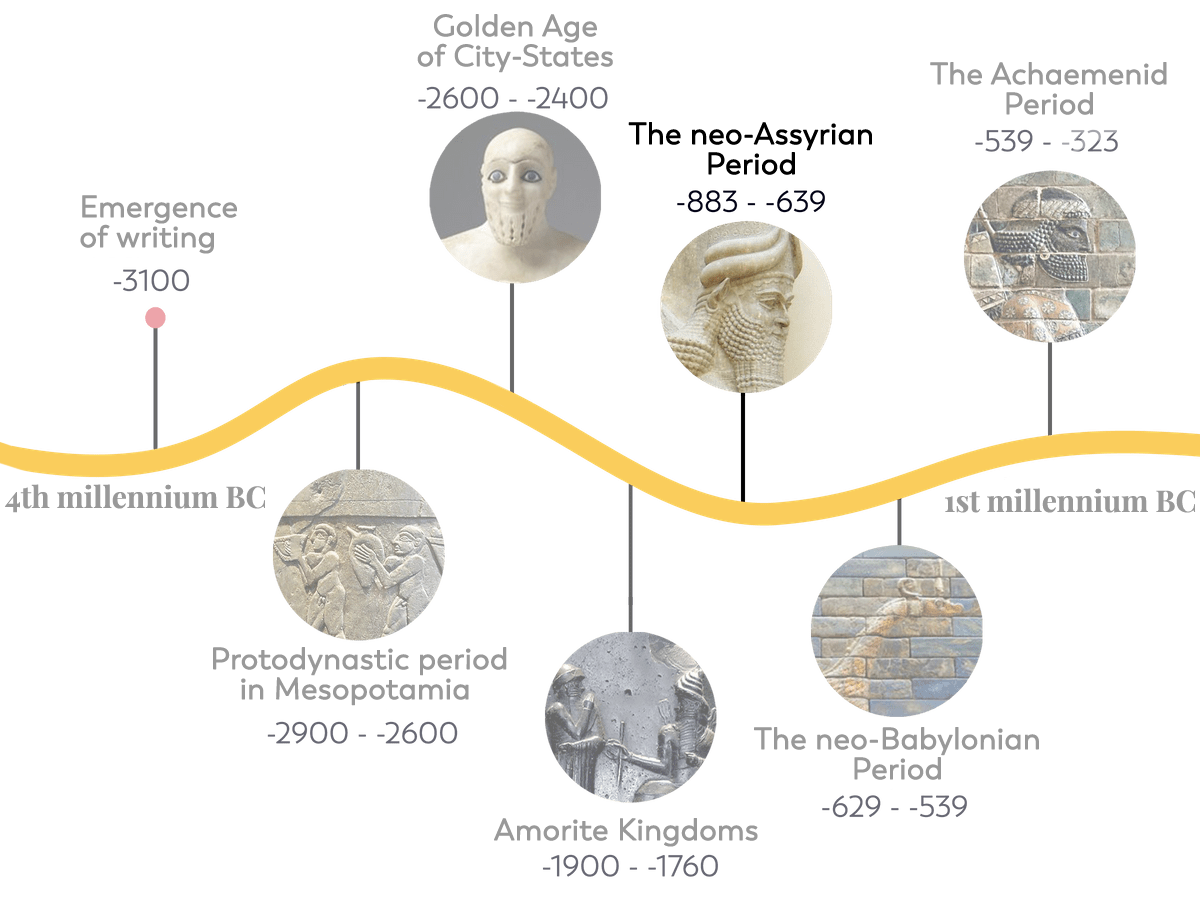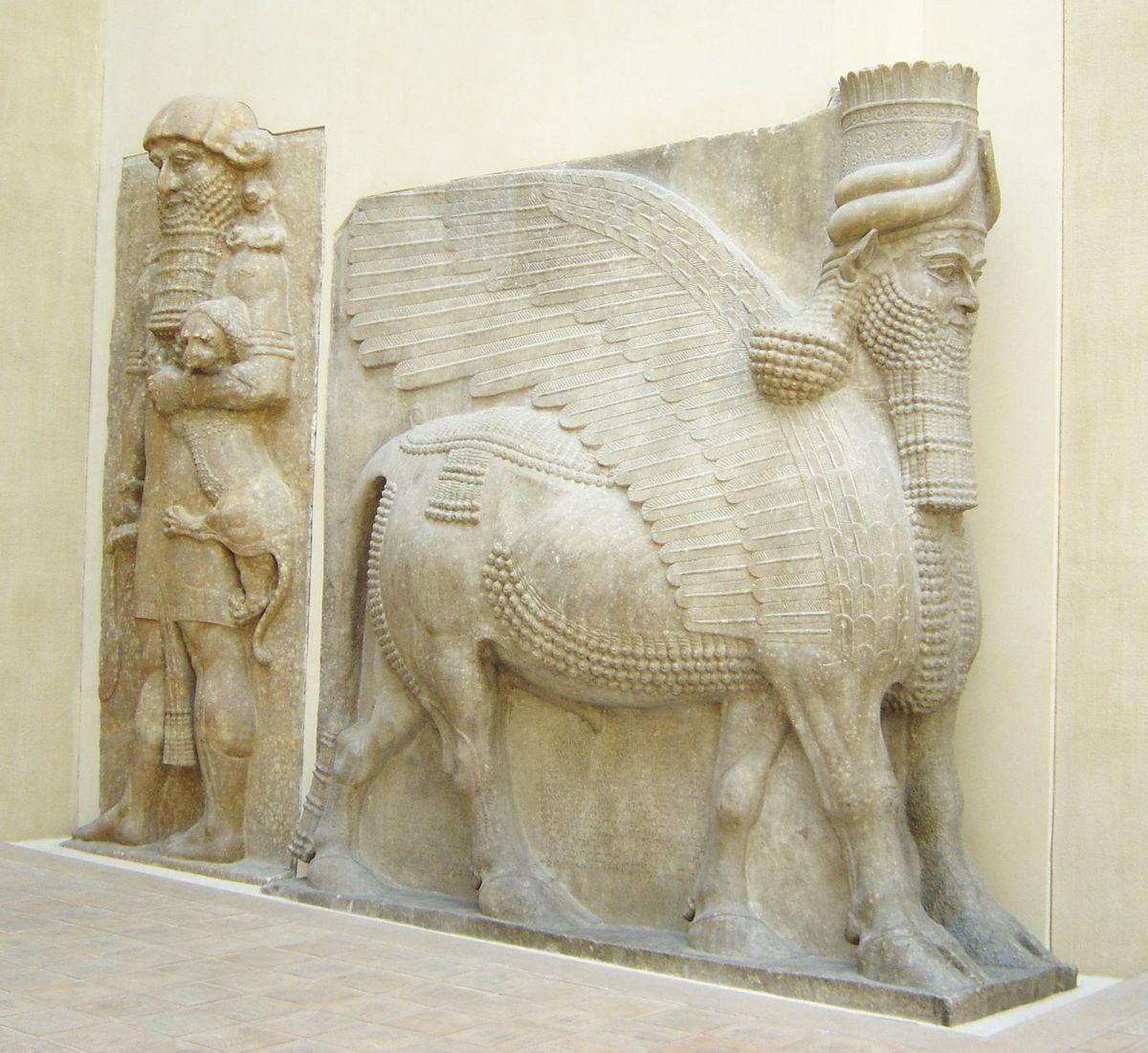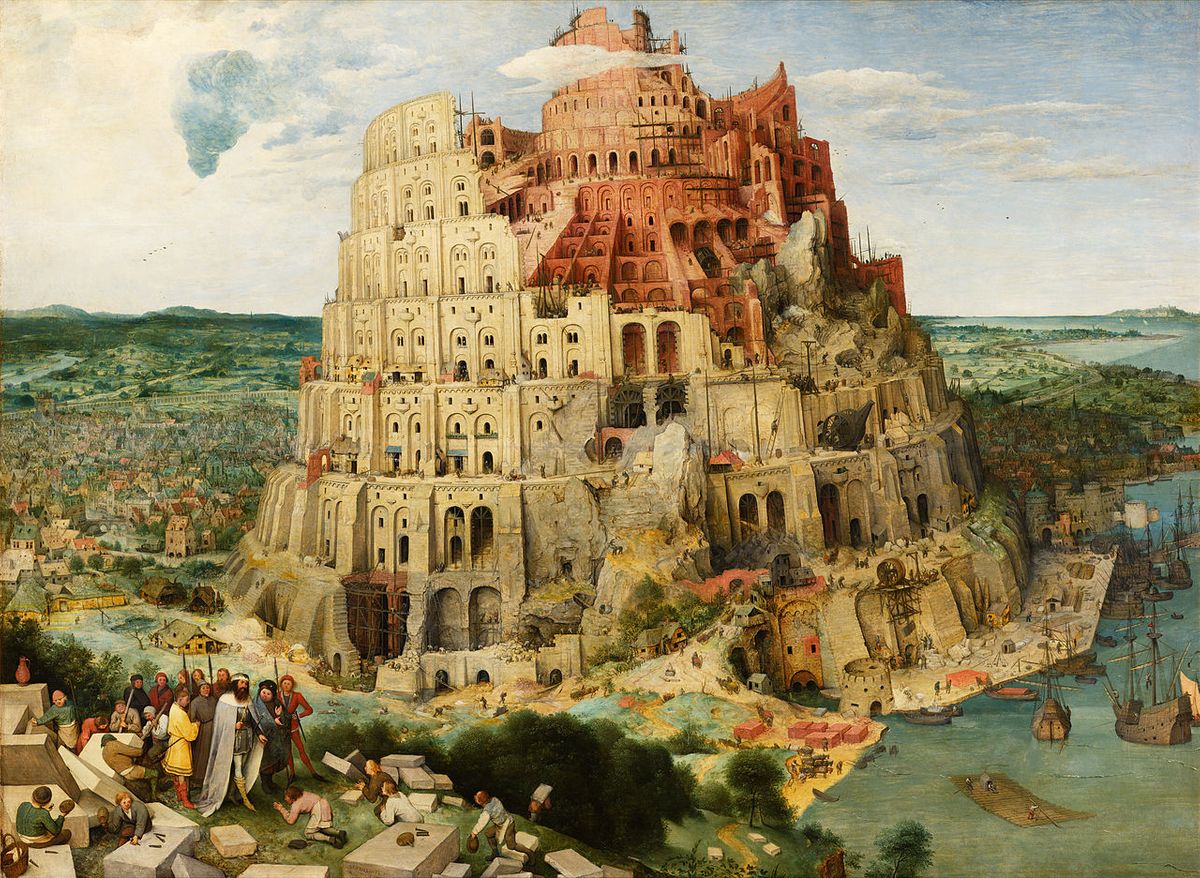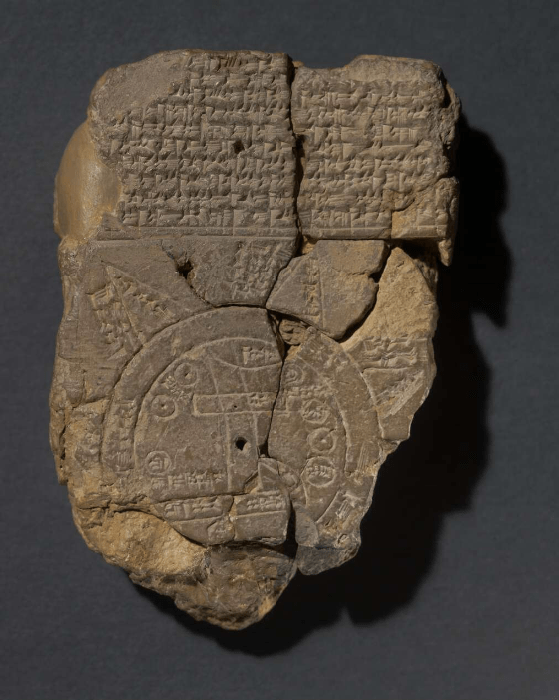



Do you remember Botta; the archaeologist who was convinced that he had discovered Nineveh? It turned out that he had actually discovered Khorsabad, and that was also exciting.
The walled part of this town, built by Sargon II, was protected by two winged bulls, called lamassu.
Take a good look at the picture… something is off, isn’t it? It’s got five legs! This was a little trick to make sure the lamassu has the right number of legs, whether you look at it from the front (two legs), or from the side (four legs).



Sculptures of five-legged lamassu (winged bulls) were created to guard the walled city of Khorsabad!
Mesopotamian civilizations were polytheistic, meaning that they worshipped several gods. Here are some of them.

Ishtar, Shamash and Enki are some of the many gods of the Mesopotamians.

Homes known as “ziggurats” were built in the right dimensions, to honour the gods.
The reality hidden behind this funny name is a four-storey tower that could be as high as 50 metres! The tower represented a mountain with a temple at its summit: thereby creating a direct link between humans and the gods.
These gigantic constructions made their mark on the collective mind: in the Bible, the Tower of Babel refers to a ziggurat!


Ziggurats are large constructions symbolizing the link between humans and gods.

The core of a ziggurat is built from millions of mud bricks, like many other constructions of the time. This material was inexpensive and easy to use: all they needed to do was dampen the clay and let it dry in the sun.

When the aim was to create an impressive visual impact, another technique was used. The brick was baked and then covered with a coloured layer known as glaze. These “glazed bricks” made it possible to create colourful pictures.

Mud bricks (dried in the sun) or fired and glazed bricks were used for building purposes.
Let’s stay in Babylon, where one of the “wonders of the ancient world” may be found. What’s that? For the ancient Greeks, this was a list of seven extraordinary places.
The Greeks were also fascinated by the “hanging” (terraced) gardens in Babylon, although we have never found any trace of them.

The Hanging Gardens of Babylon were one of the Seven Wonders of the Ancient World.
Babylon is a wonder, even without its gardens, thanks to Nebuchadnezzar ll, who rebuilt it.


Nebuchadnezzar ll was the King of Babylon during the sixth century BC. He was a king but also a builder.
Babylon was a very powerful city but not an eternal one. In 539 BC, the Persians Empire took over the city.
To decorate their palace, the Persian kings did not need to look far. They called on Babylonian craftsmen.
Look at this decoration, called the Archers’ Frieze. Can you see a slight resemblance to the Ishtar Gate?


After Nebuchadnezzar ll, the Persians took Babylon, thereby continuing the practice of their art.

"*" indicates required fields